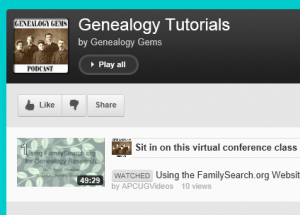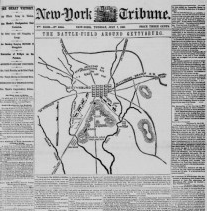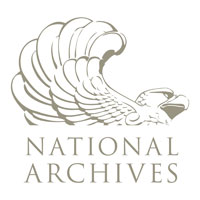Blog


FamilySearch Updates Logon, International Genealogy Index
 The folks at FamilySearch.org are constantly tweaking their already-great free data site. The latest update involves two important features:
The folks at FamilySearch.org are constantly tweaking their already-great free data site. The latest update involves two important features:
1. There’s now a drop-down menu for logging on to FamilySearch, which makes it easier to access the settings and source boxes from anywhere on the site. (Why have a log-in on a free site? Because FamilySearch doesn’t own most of its record sets, and those who do sometimes place restrictions on use. Those who log in have access to more records than those who don’t.)
2. That “classic” data set, the International Genealogy Index (IGI), is now fully searchable. From FamilySearch’s home page, just click on “All Record Collections” toward the bottom of the page, then enter “IGI” in the search field. (Why search the IGI? It accounts for about 20% of the 3 billion or so records on FamilySearch.org. Both indexed record sets and user-submitted trees are part of the IGI. The IGI has been around for a long time–long before digitized data sets came into use. The IGI can be particularly helpful if you are reviewing or updating research that was done many years ago and/or may have been submitted by Latter-day Saint (Mormon) families.)
Here’s a new, brief video that will walk you through the updates:

Civil War Maps for Genealogy Available in Online Newspapers
 In my last Premium podcast, I mentioned that Chronicling America, the Library of Chronicling America: Historic American Newspapers, http://chroniclingamerica.loc.gov Congress’ historical newspaper website, sent out a newsletter on using Civil War maps printed in the New York Daily Tribune. I just have to share more on this with everyone!
In my last Premium podcast, I mentioned that Chronicling America, the Library of Chronicling America: Historic American Newspapers, http://chroniclingamerica.loc.gov Congress’ historical newspaper website, sent out a newsletter on using Civil War maps printed in the New York Daily Tribune. I just have to share more on this with everyone!
Chronicling America reports that as hostilities progressed, “people on both sides of the burgeoning Civil War [sought] to make sense of what [was] taking place in their country. The press rushed to publish stories and accounts of the battles, but perhaps the most telling features were the maps that they published. The New York Tribune published…graphical accounts of the Battle of Bull Run, Battle of Gettysburg and more.”
Of course I had to check out the links they provided to these incredible maps that were printed right in the newspapers.
 This topic page provides useful information for finding these maps, including significant dates, associated search terms, as well as sample article links.
This topic page provides useful information for finding these maps, including significant dates, associated search terms, as well as sample article links.
This is just one more example of how newspapers continue to be an amazing resource for genealogists. If you haven’t dived into historical newsprint yet to research your family stories, you don’t know what you’re missing! My book How to Find Your Family History in Newspapers will get you started.

National Archives Genealogy Workshops on YouTube
Is the National Archives a research frontier you haven’t conquered yet? Well, that frontier just got a lot easier to tame. The Archives has released its own series of expert how-to videos on its most in-demand topics on its YouTube Channel at http://tinyurl.com/NARAGenie.
most in-demand topics on its YouTube Channel at http://tinyurl.com/NARAGenie.
The Know Your Records series introduces you to the creation, content, and use of valuable records created by the federal government. You’ll be able to make new inroads into your own American ancestral frontier along the trails of military, Freedmen’s Bureau, and other records groups when you check out new workshops like these:
- Access to Archival Databases for Genealogists (runs 55 minutes). This is an introductory level-discussion of the more popular parts of the 27 genealogically-interesting series of electronic records in the Archival Databases run by the National Archives. Learn the mechanics of searching these data files directly online.
- Army Service in the Civil War (runs 1 hour and 2 minutes). Learn to research Army service records of Civil War soldiers on both sides of the war. This video covers two major record groups: RG 94, the records of the Adjutant General (or chief record-keeper) for the Union Army; and RG 109, comprised of the Confederate records that survived the war and were turned over to War Department.”
- Documenting Death in the Civil War (runs 1 hour and 22 minutes). Learn how the War Department documented both Confederate and Union soldiers’ deaths on the battlefield, in military hospitals and prisons.
- Exodus to Kansas: The 1880 Senate Investigation of the Beginnings of the African American Migration from the South (runs 1 hour and 5 minutes). Learn more about the journey and experience of thousands of refugees from the Reconstruction-era South to Kansas as shown in the 1880 Senate investigation of this mass migration.
- Let No Man Put Asunder: Freedmen’s Bureau Marriage Records (runs 1 hour and 12 minutes). Learn more about marriage in the African American experience and specifically how to research African American marriage records within the Freedmen’s Bureau collection (1865-1872), the “richest and most extensive documentary source for investigating the African American experience in the post-Civil War and Reconstruction eras.”
- National Archives Records on Ancestry.com (runs 56 minutes). Learn from Ancestry’s own lead family historian, Anastasia Harmon, what National Archives records are available on Ancestry and strategies for searching for your ancestors on this mega site. She digs into much-used (but not always well-used) record groups like the U.S. federal census records, passenger arrival lists, border crossings and passport applications.
Of course, many of us don’t have known Civil War or African American ancestors. But everyone can learn from the first and last lectures on the list above (even if you only use Ancestry.com at your local library). So start exploring these free workshops, and soon you’ll be navigating the frontiers of your own American ancestry.




